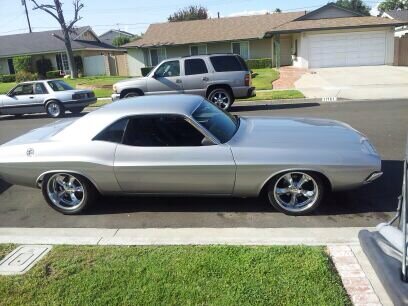hpjunke
Well-Known Member
- Joined
- Nov 13, 2010
- Messages
- 170
- Reaction score
- 24
i had my challenger aligned by and old school guy not to long ago .. he doesn't use the lasers and machines like most shops have . I took the car over to him because most wont touch my car because its lowered and has billet wheels however it still doesnt feel right .. seems as if it likes to wander when it goes over a slight bump or at high speeds .It doesnt pull right or left and according to him the camber is at 0 which he said is maxed out on adjustment for my car. he dosent have a problem re doing it im just wondering where he got his specs for it .. thanks for you help guys ..
 this is how how low it sits
this is how how low it sits

 this is how how low it sits
this is how how low it sits

















